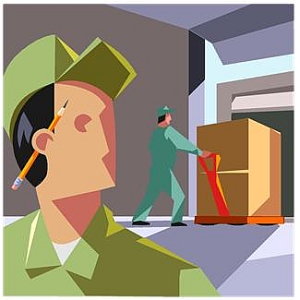The Role of Integrated Systems in Building Resilient, Scalable Fashion Businesses

Fashion moves faster than ever. One season fades into the next before anyone can blink. Styles shift overnight, and customer expectations keep climbing. For a brand to stay alive in this world, it needs more than creativity. It needs systems that hold everything together when the pace gets wild.
That’s where integration steps in. The strongest fashion companies today don’t just design clothes. They build structures that can flex, scale, and recover when the market shakes.
Linking Every Part of the Business
Every stage of the fashion process relies on connection. Design leads to sourcing. Sourcing leads to production. Production moves into logistics. Without a central system, all those steps drift apart. Miscommunication creeps in, and small errors grow into big ones.
That’s why so many brands now turn to fashion ERP solutions. ERP systems unify every department under one digital roof. They keep inventory, orders, suppliers, and financials in sync. When everyone works from the same source of truth, things flow better. Production teams can see what sales are planning. Designers can check what materials are available. Finance teams can predict costs in real time. It’s not about replacing people. It’s about connecting them in a smarter way.
Building Strength Through Transparency
In today’s fashion world, resilience starts with visibility. You can’t fix what you can’t see. Integrated systems make that visibility possible. They pull together data from across the business and show it clearly. Managers can spot delays early. Suppliers can share updates instantly. Teams can make decisions with confidence instead of guessing.
Transparency also builds trust. When everyone sees how things move, it’s easier to stay aligned. Customers notice too. They care about where their clothes come from and how they’re made. Integrated systems help brands prove their claims with real data instead of vague promises. That trust becomes a major advantage in a market where reputation can change overnight.
The Balance Between Creativity and Control
Fashion thrives on ideas. It’s built on instinct, color, and storytelling. But without control, creativity can fall apart. Integrated systems give that structure without smothering the spark. They track progress, measure output, and show what works. Designers can move freely within that frame, knowing the details stay handled in the background.
When a design changes, the update reaches production instantly. When a new material runs out, sourcing gets alerted before it causes trouble. That kind of coordination saves time and sanity. It also frees creative minds from constant worry about logistics.
Growing Without Losing Focus
Scaling a fashion brand sounds exciting, but it can get messy fast. More stores, more lines, more data — growth multiplies the pressure. Integrated systems handle that complexity better than scattered tools ever could.
A single ERP platform can manage multiple collections, currencies, and regions. It keeps processes consistent as the business expands. That stability matters when project teams spread out across continents. Everyone stays on the same page even when the company doubles in size. A clear system reduces confusion, supports remote work, and keeps operations agile. Growth feels controlled instead of chaotic.
Data-Driven Decisions that Stick
The smartest fashion businesses treat data like a design material. It shapes the look and feel of their strategies. Integrated systems collect that data automatically. Sales numbers, shipping times, customer returns — everything gets tracked and turned into insight.
Leaders use that information to plan future moves. They can test a new market with less risk. They can fine-tune pricing based on demand. They can see which products deserve a second run and which ones should retire early. Data replaces guesswork with proof. Over time, those small, informed choices build a much stronger brand foundation.
Tech That Supports Sustainability
Sustainability is not optional anymore. Customers demand it. Regulators enforce it. Investors expect it. The good news is that integrated systems make sustainable practices more practical. They help brands track waste, optimize materials, and cut unnecessary shipments.
A connected ERP system can reveal where resources get lost. Maybe too much fabric sits unused. Maybe certain factories run inefficiently. Once the data becomes visible, leaders can act. Less waste means lower costs and a lighter footprint. That balance between profit and responsibility turns sustainability into strategy, not just marketing.
The Takeaway
Fashion will always be emotional, but emotion alone won’t keep a brand alive. Integration gives it structure. Systems like fashion ERP tie the creative and operational worlds together. They make businesses transparent, responsive, and scalable. They turn scattered data into clear direction. They let designers dream big without losing control of the details.
Resilient fashion businesses don’t rely on luck. They rely on clarity. Every connected system becomes a safety net and a growth engine at once. In a market that never slows down, project integration isn’t just helpful — it’s survival. The brands that understand that truth will not only stay standing. They’ll keep leading.











